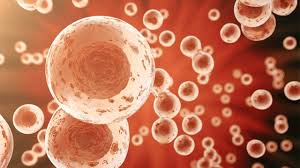
Breaking News
 Bitcoin Circular Economies and a Bridge Between Las Vegas and Peru
Bitcoin Circular Economies and a Bridge Between Las Vegas and Peru
 'Right of Return' for Israeli Child Predators Fleeing U.S.
'Right of Return' for Israeli Child Predators Fleeing U.S.
Top Tech News
 NVIDIA just announced the T5000 robot brain microprocessor that can power TERMINATORS
NVIDIA just announced the T5000 robot brain microprocessor that can power TERMINATORS
 Two-story family home was 3D-printed in just 18 hours
Two-story family home was 3D-printed in just 18 hours
 This Hypersonic Space Plane Will Fly From London to N.Y.C. in an Hour
This Hypersonic Space Plane Will Fly From London to N.Y.C. in an Hour
 Magnetic Fields Reshape the Movement of Sound Waves in a Stunning Discovery
Magnetic Fields Reshape the Movement of Sound Waves in a Stunning Discovery
 There are studies that have shown that there is a peptide that can completely regenerate nerves
There are studies that have shown that there is a peptide that can completely regenerate nerves
 Swedish startup unveils Starlink alternative - that Musk can't switch off
Swedish startup unveils Starlink alternative - that Musk can't switch off
 Video Games At 30,000 Feet? Starlink's Airline Rollout Is Making It Reality
Video Games At 30,000 Feet? Starlink's Airline Rollout Is Making It Reality
 Automating Pregnancy through Robot Surrogates
Automating Pregnancy through Robot Surrogates
 Grok 4 Vending Machine Win, Stealth Grok 4 coding Leading to Possible AGI with Grok 5
Grok 4 Vending Machine Win, Stealth Grok 4 coding Leading to Possible AGI with Grok 5
MIT's "living drug factories" produce insulin from inside the body

For the last couple of decades, a relatively small amount of diabetics have benefited from what's known as pancreatic islet cell transplantation. These are the cells that produce insulin in a functional pancreas and by implanting them into sufferers of diabetes, they can take on their traditional role and negate the need for regular insulin injections.
The reason this form of therapy isn't used more widely is that the great majority of recipients experience complications, as their immune system mistakes the transplanted cells for dangerous invaders and goes on the attack. Drugs that suppress this immune response are one solution, but they invite their own risks such as vulnerability to infection or more serious side effects.
So getting pancreatic islet cells to survive transplantation and function as normal is seen as a key objective by researchers in the field. Converting the patient's own liver cells into islet cells, wrapping them in seaweed-based capsules and organizing them into clusters are just a few of the ways the process may be improved, and now scientists at MIT have come up with another.
The technology involves encapsulating the cells in a protective shell made from a silicon-based elastomer, combined with a porous membrane. These pores are large enough that nutrients, oxygen and insulin can move freely through the membrane, but small enough to keep out immune cells that seek to attack the cell.

 How Great Powers Fall Apart
How Great Powers Fall Apart
 Zionism Is What It Does
Zionism Is What It Does HERE COMES THE MOTHERSHIP
HERE COMES THE MOTHERSHIP

